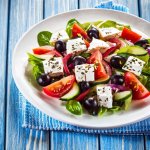nadellii
Active member
So, I love the avgolemono sauce when it is just a little bit foamy. To do that, I attempt to beat the egg whites to stick peaks, then add the rest of the ingredients slowly. The sauce has a nice foamy texture to it but over time, it kind of collapses. Does anyone know how to keep it like that? Is there something I can add extra to keep it like that?



